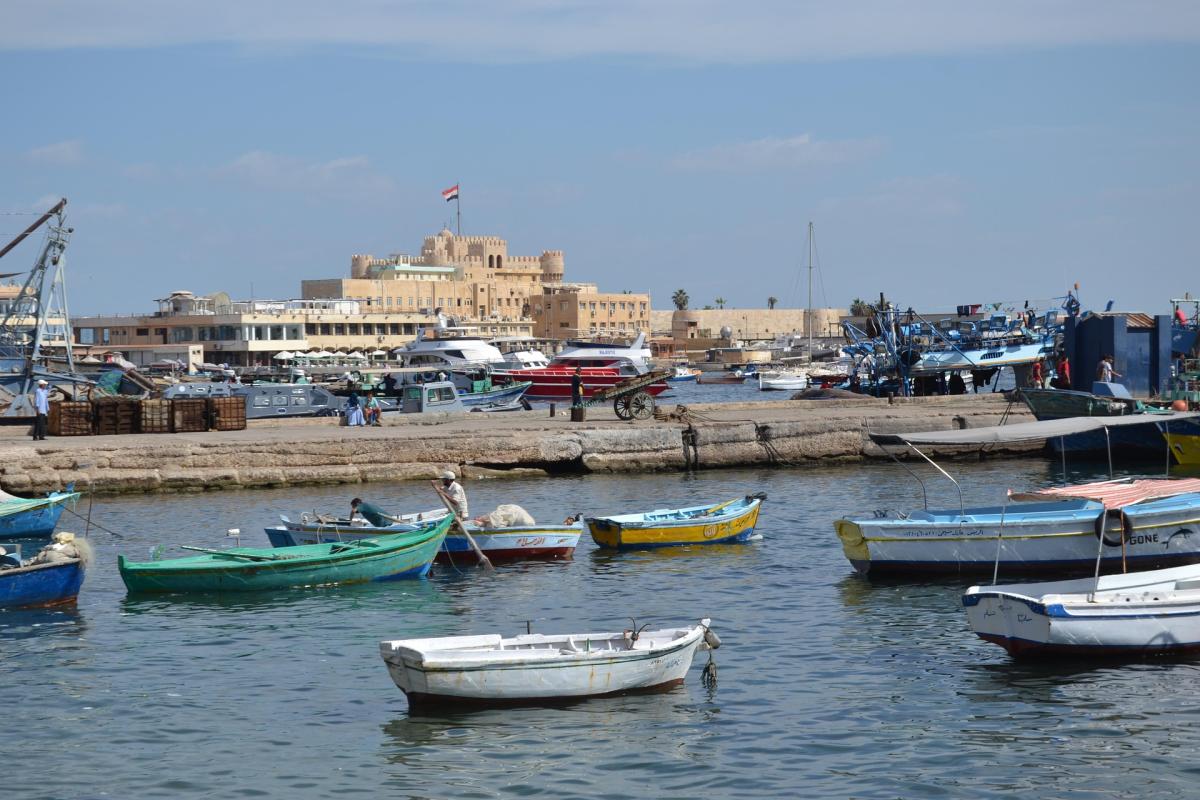
Alexandria Travelogue: The Pearl of the Mediterranean
The air is warm and humid, the salty scent of the sea mingling with the aroma of history, beckoning me to come closer. I step into the city of Alexandria, a city whose name is intertwined with myth and legend. Alexandria, the radiant pearl of the Mediterranean coast, a city with a rich history, diverse culture, and varied tourist attractions, is an alluring destination for any world traveler. Join me on this journey as we uncover the secrets of this ancient city and lose ourselves in its labyrinth of history and culture.
Through the Passageways of History, From Alexander to Today
Alexandria, a name that instantly evokes Alexander the Great, the formidable conqueror of ancient history. In 331 BC, Alexander founded a city in this part of Egypt, destined to become the center of the world. He envisioned a city that would be not only a thriving commercial port but also a global hub of science and culture. However, fate did not allow Alexander to witness the grandeur of his city. He passed away in Babylon before Alexandria reached its zenith, and his final resting place remains a mystery to this day.
Upon Alexander's death, Egypt fell to Ptolemy I, one of his generals, and the Ptolemaic dynasty ruled over Alexandria. During their reign, Alexandria rapidly flourished, becoming one of the largest and wealthiest cities in the ancient world. The ancient Library of Alexandria, the Lighthouse of Pharos, and the Serapeum were just glimpses of the splendor and magnificence of this era. Alexandria at this time was not only a center of trade and politics but also the beating heart of global knowledge and culture. Scholars, philosophers, artists, and writers from around the world flocked to this city to research and study in its unparalleled library and participate in its scientific and cultural circles.
In the 1st century BC, Alexandria was conquered by the Roman Empire. The Roman era was also a period of prosperity and growth for Alexandria, though no longer the center of the empire, it remained one of Rome's most important cities. Magnificent Roman structures, amphitheaters, and public baths were constructed during this period, traces of which are still visible throughout Alexandria.
With the rise of Islam and the Muslim conquest of Egypt in the 7th century AD, Alexandria came under the rule of the Islamic Caliphate. In this era, although political and cultural centrality shifted to other cities, Alexandria continued its life as a vital commercial port and a populous city.
Over the centuries, Alexandria has witnessed many ups and downs. From wars and earthquakes to economic recessions and political shifts, the city has consistently faced diverse challenges. Yet, despite all these tribulations, Alexandria has always managed to preserve its identity and authenticity, shining as a unique city in the history and culture of the world.
Today, Alexandria is a modern and bustling city, with a population of approximately five million, it is the second-largest city in Egypt. It remains a major commercial and industrial port, playing a significant role in the Egyptian economy. But alongside this modernity and dynamism, Alexandria still retains vestiges of its rich history and culture. Historical buildings, museums, libraries, and traditional markets all echo the city’s glorious past, making it an appealing destination for tourists from across the globe.
Libraries of Alexandria, From Yesterday to Today, Beacons of Knowledge
The name Alexandria is eternally linked with its libraries. The ancient Library of Alexandria was undoubtedly one of the most crucial scientific and cultural centers of the ancient world. A treasury of knowledge and wisdom, it housed thousands of invaluable manuscripts and attracted eminent scholars and researchers from all corners of the earth.
Imagine shelves overflowing with papyrus scrolls, manuscripts in various languages, from Greek and Egyptian to Persian and Indian. In the corridors of this library, scientists and philosophers engaged in discussions and exchanges, students sought knowledge and wisdom, and translators rendered precious works from different languages into one another. The Library of Alexandria was not merely a book repository, but a vast university and an advanced research center that played an unparalleled role in the advancement of science and culture in the ancient world.
Unfortunately, the ancient Library of Alexandria suffered a tragic fate throughout history. Various accounts exist about its destruction, but what is certain is that this invaluable treasure trove of human knowledge was lost forever, leaving behind only a memory of its greatness in history.
However, the spirit of the Library of Alexandria never died. In 2002, after centuries of oblivion, the modern Library of Alexandria was reborn. This magnificent library, with its modern and eye-catching architecture, standing tall on the Mediterranean coast, keeps the memory of the ancient library alive and continues to operate as a vital scientific and cultural center in the 21st century.
The modern Library of Alexandria is not only a vast library with millions of books but also a comprehensive cultural complex that includes museums, art galleries, conference halls, research centers, and even a planetarium. This library hosts diverse cultural and scientific events and acts as a bridge between cultures and civilizations.
A visit to the modern Library of Alexandria is an unforgettable experience. Walking through its expansive corridors, admiring its unparalleled architecture and the beautiful Mediterranean vista, and feeling present in the heart of knowledge and culture captivates every visitor. The modern Library of Alexandria is not merely a tourist attraction but a symbol of hope, reconstruction, and the revival of human cultural heritage.
Footprints of the Romans, the Amphitheater, and Architectural Heritage
The Roman presence in Alexandria marked another chapter in the city’s tumultuous history. Following the Roman conquest of Egypt, Alexandria became one of the most important cities in the Roman Empire, and Roman culture and architecture profoundly influenced the city.
The Roman Amphitheater of Alexandria is one of the few surviving Roman-era structures in Egypt that has largely withstood the test of time. This historical site, dating back to the 2nd century AD, demonstrates the splendor and magnificence of Roman architecture in Egypt.
The Roman Amphitheater is an open-air theater with a seating capacity of about 800 spectators. It hosted theatrical performances, gladiatorial contests, and other public events. Today, visitors can walk among the stone tiers of this amphitheater and imagine the exciting events that once took place here.
Beyond the amphitheater, other remnants of the Roman era remain in Alexandria, including public baths, stone columns, and the ruins of Roman temples. These remnants, though not as well-preserved as the amphitheater, still recall the powerful Roman presence in the city, adding to Alexandria's historical and cultural richness.
Wandering among the Roman relics of Alexandria is like traveling back in time. In these moments, one can imagine Roman soldiers marching through the city streets, Roman merchants trading in its markets, and Roman citizens attending performances in the amphitheater. The Roman legacy in Alexandria is an integral part of the city's identity, transforming it into an open-air museum of history and culture.
Exploring Tourist Attractions, From Qaitbay Citadel to Pompey's Pillar
Alexandria is a city brimming with tourist attractions to satisfy every taste. From historical sites and museums to beautiful beaches and bustling markets, in Alexandria, there's always something new to see and experience.
Qaitbay Citadel: One of Alexandria's most iconic tourist attractions is the Qaitbay Citadel, situated on an island at the entrance to the city's Eastern Harbor. This magnificent fortress, built in the 15th century AD by Mamluk Sultan Al-Ashraf Sayf al-Din Qaitbay, was actually constructed on the ruins of the Lighthouse of Pharos, one of the Seven Wonders of the Ancient World.
Qaitbay Citadel is a robust defensive structure with high walls and numerous towers. Visitors can walk within the citadel, climb its towers, and enjoy the stunning views of the Mediterranean. Inside the citadel, there is also a museum dedicated to the history of the citadel and the Lighthouse of Pharos.

Pompey's Pillar: In the heart of Alexandria, a colossal and majestic column known as Pompey's Pillar stands tall. This granite column, over 25 meters high, was actually erected in honor of Roman Emperor Diocletian in the 3rd century AD. The name Pompey was mistakenly given to this column, as in the Middle Ages, it was believed that the column was erected in memory of Pompey the Great, a famous Roman general.
Pompey's Pillar is the only remnant of the Serapeum temple, one of the most important Hellenistic-era temples in Alexandria. Around the pillar, the remains of other parts of the temple, as well as sphinx statues, are visible, all recalling the grandeur and magnificence of this ancient temple.
New Library of Alexandria: As mentioned earlier, the new Library of Alexandria, one of the most modern and beautiful libraries in the world, is itself a tourist attraction. Its unique architecture, rich collections of books, museums, art galleries, and beautiful Mediterranean views have all made the new Library of Alexandria one of the city's most visited places.
Obelisks: Although the famous obelisk of Alexandria is not specifically mentioned in the original text, obelisks as symbols of ancient Egypt are present in Alexandria as well. Obelisks are tall, narrow stone pillars that taper to a pyramidion at the top. In ancient times, these columns were erected as symbols of the power and endurance of the Egyptian pharaohs and were usually placed in front of temples and important structures. While many of Egypt’s obelisks have been relocated to other countries, some can still be seen in Alexandria, recalling the ancient history and civilization of this land.
In addition to these main attractions, Alexandria also has numerous museums that history and culture enthusiasts can visit. The Alexandria National Museum, the Royal Jewelry Museum, the Museum of Fine Arts, and the Alexandria Aquarium Museum are just a few of the valuable museums in this city.
The Culture of Alexandria, A Fusion of East and West
Alexandria's culture, like the city itself, is a multilayered and diverse phenomenon formed by the fusion of various cultures. Alexandria's geographical location on the Mediterranean coast has long made it a bridge between East and West. Egyptian, Greek, Roman, Arab, and European cultures have all played a role in shaping Alexandria's cultural identity.
In Alexandria, one can witness the peaceful coexistence of diverse cultures and traditions. Mosques and churches stand side by side, traditional markets neighbor modern shopping centers, and people of different languages and cultures live together.
Arabic is the official language of Alexandria, but other languages such as English, French, and Greek are also prevalent in the city. Alexandrian cuisine also reflects the city's cultural diversity. Seafood, Mediterranean dishes, and traditional Egyptian foods all have a place on Alexandrian tables.
The people of Alexandria are renowned for their hospitality and warmth. They welcome tourists with open arms and are ready to share their experiences and culture with them. Walking through the streets of Alexandria, interacting with locals, and experiencing their daily life is the best way to understand the city's authentic culture.
Art and literature have always held a special place in Alexandria. Many poets, writers, artists, and musicians have emerged from Alexandria, whose works are recognized worldwide. Today, Alexandria remains a vibrant cultural center, hosting various festivals, exhibitions, and artistic events.
The Atmosphere of Alexandria, A Unique Experience
Alexandria is not just a historical and tourist city, it’s an experience. An experience of walking down bustling streets, hearing the sound of sea waves, breathing in the salty air, the aroma of Arabic coffee, the taste of seafood, watching the sunset over the Mediterranean, and immersing oneself in the city's unique atmosphere.
Alexandria is a city where the feeling of life flows. People move about in the streets, shops are open, cafes are full of patrons, and the sound of laughter and conversation is heard everywhere. Alexandria is a city that never sleeps, a city that is always alive and dynamic.
Alexandria nights also have their own special beauty. The city's colorful lights turn on, moonlight shines on the sea's surface, and the cool coastal breeze perfumes the air. Walking on the Alexandria Corniche at night is a romantic and delightful experience.
Alexandria is a city that must be felt with all senses. One must get lost in its alleyways, wander through its markets, drink coffee in its cafes, and converse with its people. Alexandria is a city whose memories linger for years in the mind, always keeping the longing to return alive in the heart.
Conclusion: Alexandria, A Journey into the Depths of History and Culture
My journey to Alexandria comes to an end, but the memories of this beautiful city will remain in my mind forever. Alexandria is a city that exceeded my expectations. A city with a richer history, more diverse culture, and more engaging tourist attractions than I had imagined.
Alexandria was a journey into the depths of history and culture. A journey to the city of Alexander the Great, the ancient Library, the Roman Amphitheater, and Qaitbay Citadel. A journey to the city of the sea, the beach, seafood, and warm-hearted people. A journey to the city of memories, emotions, and unforgettable experiences.
If you are also seeking a unique travel destination that offers history, culture, tourist attractions, and a special atmosphere, put Alexandria on your list of next destinations. You can be sure that you will not regret traveling to this city and will take home happy memories. Alexandria, the Pearl of the Mediterranean, awaits you.
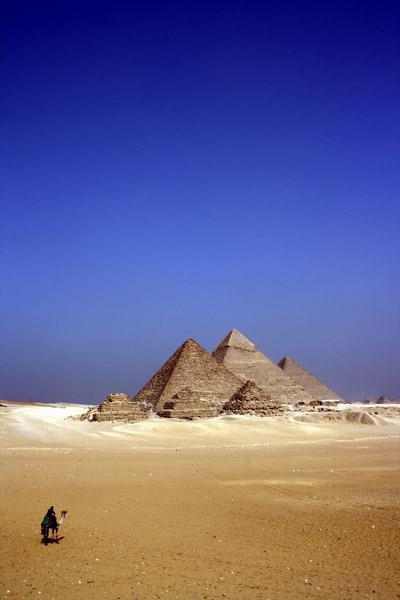
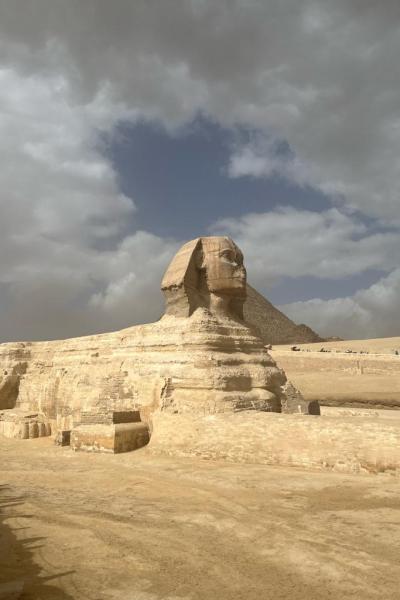
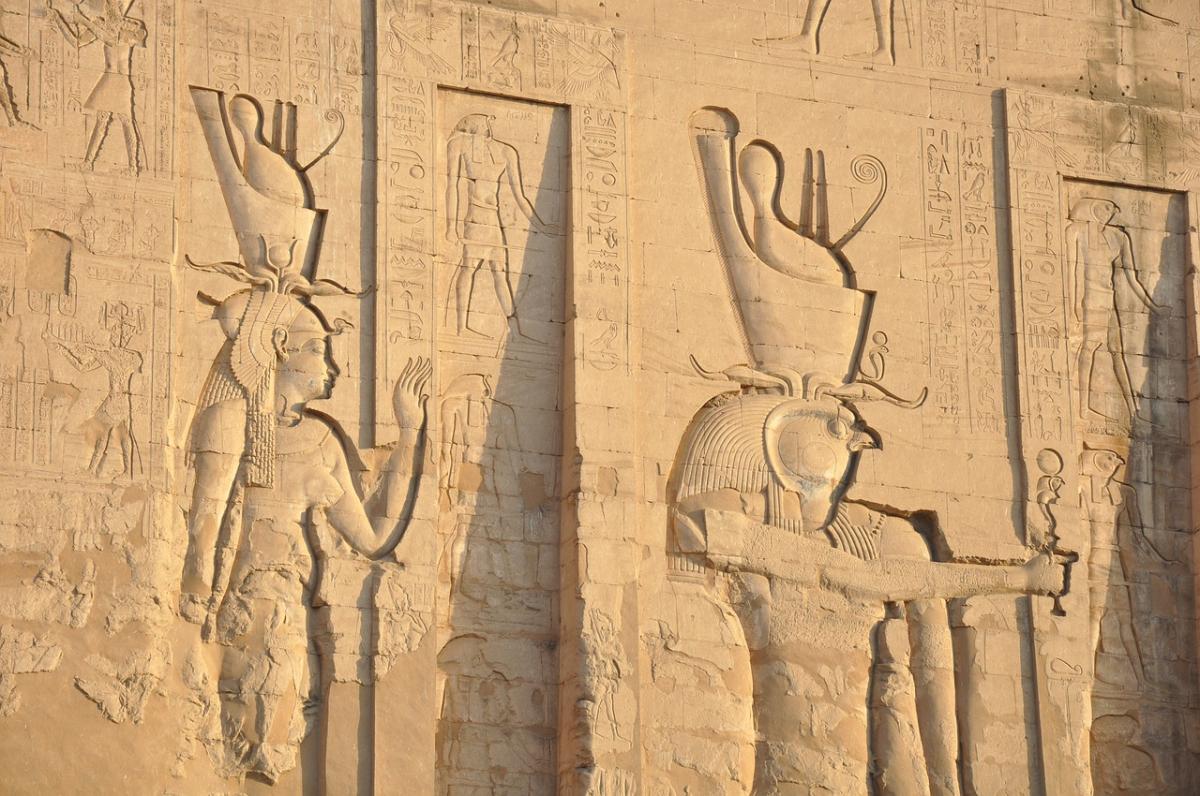
Egypt, a nation at the crossroads of Africa and the Middle East, boasts a culture that is as rich and layered as its millennia-old history . From the monumental legacy of the Pharaohs to the enduring influence of Coptic Christianity and the pervasive traditions of Islam, Egyptian culture is a vibrant...
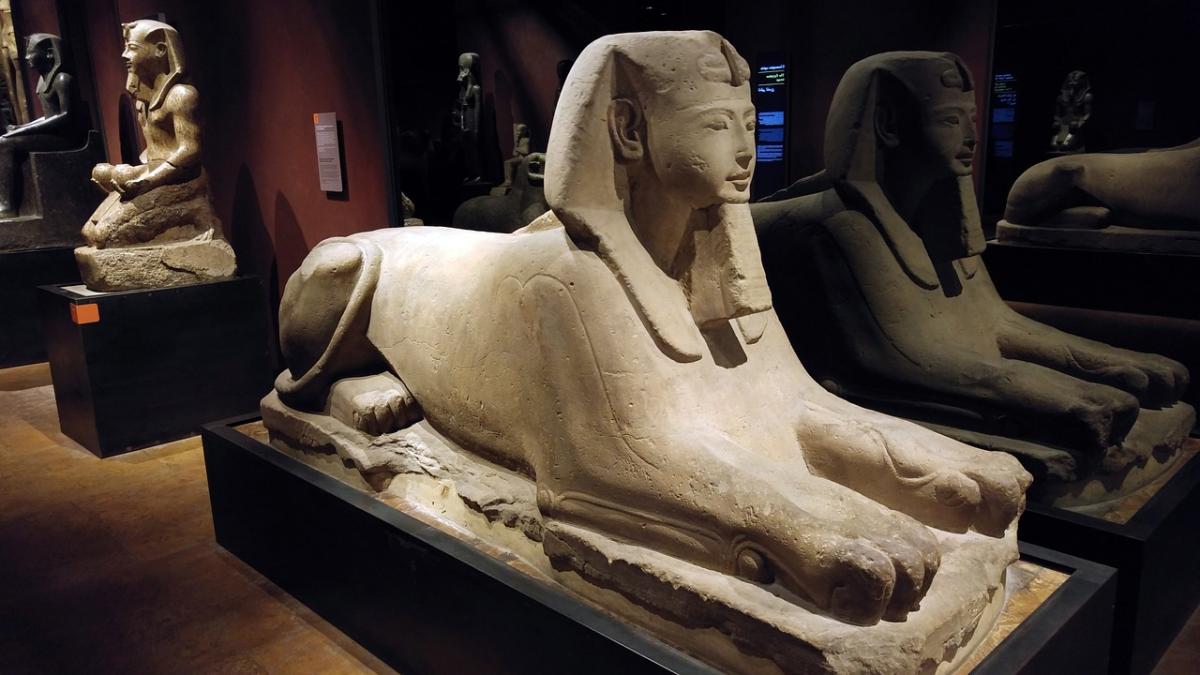
Located in the heart of Cairo on Tahrir Square, the Museum of Egyptian Antiquities, commonly known as the Egyptian Museum, stands as the oldest archaeological museum in the Middle East . For over a century, it has been the worlds foremost repository of Pharaonic antiquities, offering an unparalleled...
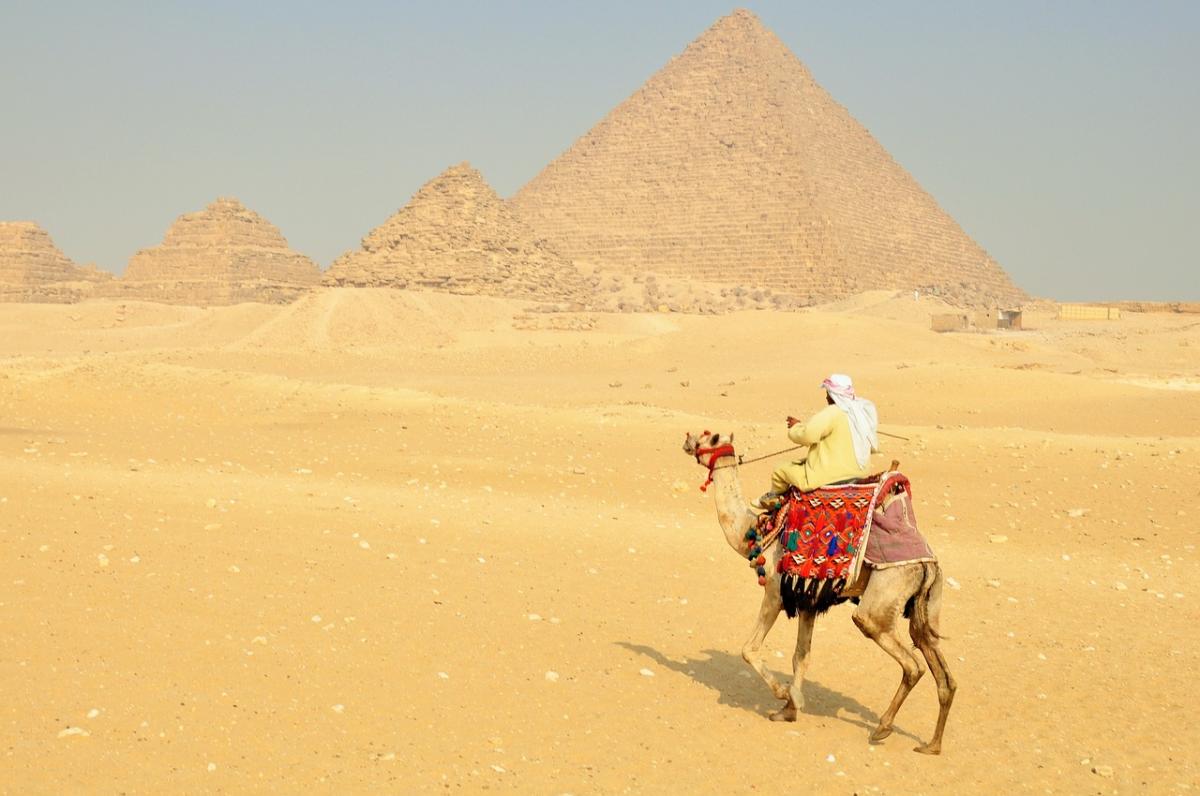
Egypt, the land of pharaohs, ancient tombs, and the life-giving Nile, often conjures images of grand tours and luxurious cruises . However, this cradle of civilization is remarkably accessible for the budget-conscious traveler . With careful planning, you can experience its most iconic wonders without...